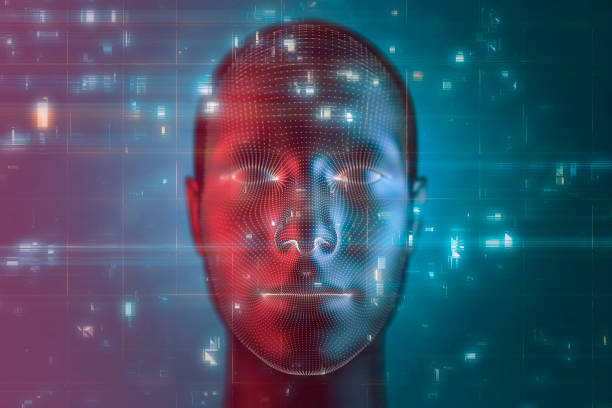In today’s rapidly evolving technological landscape, Artificial Intelligence Operating Systems (AIOS) are emerging as game-changers across various industries. These systems not only streamline processes and enhance efficiency but also prioritize security and user experience. This article delves into the latest trends and solutions surrounding Secure AIOS, Adaptive UI in AIOS, and Autonomous Data Management in AIOS, shedding light on their applications and implications for the future.
.
### Understanding AIOS and Their Significance
Artificial Intelligence Operating Systems (AIOS) are specialized platforms designed to integrate AI capabilities into existing technological frameworks. They optimize workflows, enhance user interactions, and ensure robust data security. As businesses and organizations continue to rely on data-driven decision-making, the need for these advanced operating systems becomes evident. AIOS amalgamates several elements, including machine learning, natural language processing, and predictive analytics, to cater to the unique needs of various sectors.
.
### The Rise of Secure AIOS
As cyber threats become increasingly sophisticated, the demand for Secure AIOS has surged. These operating systems implement multilayered security protocols to protect sensitive data and user privacy. The focal point of Secure AIOS is the commitment to data encryption, adaptive threat detection, and user authentication processes.
One of the key innovations in Secure AIOS is **end-to-end encryption**. This technology ensures that data remains secure during transmission, making it nearly impossible for unauthorized users to gain access. Companies like Microsoft and Google have already integrated these features into their platforms, setting industry standards for security.
Furthermore, **adaptive threat detection** uses machine learning algorithms to identify unusual patterns and potential threats in real-time. By analyzing user behavior, Secure AIOS can proactively respond to potential security breaches. Companies such as Darktrace are at the forefront of developing AI algorithms that adapt to these new threats.
.
### Leveraging Adaptive UI in AIOS
User experience is paramount in today’s digital age, and Adaptive UI in AIOS is a revolutionary approach to enhancing this experience. Adaptive UI refers to interfaces that dynamically adjust based on user behavior, preferences, and environmental conditions. This individualized approach ensures that users face fewer barriers when interacting with complex AI systems.
A perfect example of Adaptive UI in action is found in smart devices, where the interface tailors itself based on usage patterns. The system learns when and how products are used and makes adjustments to accommodate those habits. For instance, Samsung has started implementing these principles in their SmartThings platform, which controls IoT devices across a wide array of applications.
Additionally, innovations in **Natural User Interface (NUI)**, such as voice and gesture recognition, are increasingly becoming part of Adaptive UI in AIOS. Amazon’s Alexa and Apple’s Siri are notable implementations of these interfaces, making it easier for users to communicate with technology using natural language.
.
### Autonomous Data Management: Revolutionizing Data Handling
As the volume of data generated daily skyrockets, effective data management is crucial. Autonomous Data Management refers to the systems capable of autonomously managing, processing, and analyzing data without human intervention. This paradigm shift is made possible through the integration of machine learning and AI algorithms within AIOS.
One of the most impactful applications of Autonomous Data Management is in the realm of predictive analytics. AIOS can analyze vast datasets to forecast trends and business outcomes, allowing organizations to make informed decisions based on real-time insights. IBM’s Watson is a prime example of how businesses can leverage Autonomous Data Management to gain a competitive edge.
Moreover, **data cleansing** and **integration** become effortless with Autonomous Data Management. Systems like Informatica use AI to automate data cleaning processes, ensuring high-quality data that organizations can trust. This innovation reduces the time and manual labor associated with data management, allowing teams to focus on strategy rather than data cleanup.
.
### Industry Applications and Use Cases
1. **Finance and Banking**:
In this industry, Secure AIOS empowers firms to combat fraud effectively while maintaining stringent compliance with regulations. Machine learning algorithms can detect anomalies in transaction patterns, alerting institutions before losses occur.
2. **Healthcare**:
The integration of Adaptive UI in AIOS is transforming patient interactions with healthcare systems. Patients can now use voice-activated systems or mobile apps that adapt to their preferences, making healthcare more accessible and user-friendly.
3. **Retail**:
Autonomous Data Management is revolutionizing inventory management in retail. AIOS can predict stock levels based on consumer buying patterns, ensuring that businesses remain prepared for fluctuations in demand.
4. **Manufacturing**:
Utilizing Secure AIOS, factories can monitor machinery performance, predicting failures before they happen. This predictive maintenance approach not only saves costs but also enhances overall operational efficiency.
.
### Technical Insights: The Backbone of AIOS Innovations
The technological advancements surrounding AIOS are a complex interplay of various components that enhance their functionalities.
– **Machine Learning & AI Integrations**: These algorithms form the core of many AIOS features, from predictive analysis to adaptive UIs that respond to user interactions.
– **Cloud Computing Architecture**: With the shift toward cloud services, AIOS are designed to utilize its flexibility and scalability, providing the necessary computational resources on demand.
– **IoT Compatibility**: The growth of the Internet of Things is pushing for AIOS to be compatible with a myriad of devices, ensuring seamless interactions across different platforms and environments.
.
### Challenges and Future Directions
While the prospects of Secure AIOS, Adaptive UI, and Autonomous Data Management are exciting, challenges remain. One major hurdle is ensuring interoperability between different AIOS platforms, as businesses generally use a mix of technologies. Another challenge is addressing ethical concerns regarding data privacy and the potential misuse of AI technologies.
To combat these challenges, the development of standardized protocols is essential. Collaborative efforts among industry leaders and regulatory bodies would pave the way for a more cohesive ecosystem.
.
### Conclusion
The advent of AI Operating Systems marks a significant milestone in technology’s trajectory. Not only do these systems emphasize security, adaptability, and autonomous management, but they also promise immense potential across various industries. By embracing these innovations, businesses can unlock new efficiencies, enhance user experiences, and ultimately drive growth.
In a world characterized by rapid technological advancements, staying abreast of trends in Secure AIOS, Adaptive UI, and Autonomous Data Management is crucial for companies aiming to remain competitive. The journey toward a more intelligent future has only just begun, and the implications are bound to be transformative.
.
**References**
1. Microsoft. (2023). Enhancing Security in Cloud Computing: Best Practices.
2. IBM. (2023). Autonomous Data Management: Revolutionizing the Future of Data Analytics.
3. Samsung. (2023). Adaptive User Interface: The Future of Smart Devices.
4. Amazon. (2023). Understanding the Role of Voice Recognition in Smart Home Environments.
5. Informatica. (2023). AI-Powered Data Cleansing: The Future of Data Management.
This article provides a comprehensive look into the current trends and future implications surrounding AI Operating Systems, emphasizing the importance of security, user experience, and data management in our increasingly digital world.























